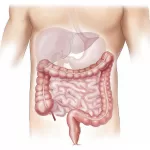Situation at a Glance
Description of the Situation
On 30 January 2024, the IHR NFP of Uruguay notified the Pan American Health Organization/World Health Organization (PAHO/WHO) of a confirmed human case of WEE. The case, a 42-year-old person from a rural area in the Department of San Jose, is the first human case of WEE in Uruguay since 2009 (1)(2).
The patient had onset of symptoms in the first days of January 2024, reporting headache, fever, photophobia and vomiting. Later the patient presented with deterioration of consciousness, and medical imaging patterns were compatible with encephalitis, requiring admission to intensive care for a few days. Currently the patient has recovered and has been discharged. (1)(2).
During the case’s disease evolution, analysis of cerebrospinal fluid was performed according to the protocol and supplies available in the region. The sample was processed by the National Laboratory of the Ministry of Health of Uruguay. Initially a negative result by polymerase chain reaction (PCR) was obtained. The patient’s evolution required several further lumbar punctures, which were analyzed for the detection of IgM antibodies specific for WEE virus, and on 30 January 2024 a positive result was obtained (1)(2).
Regarding the epidemiological background, the individual resides in a rural area in a department of the country with known WEE viral circulation; this department has the highest incidence of confirmed cases in equines in the country. According to the epidemiological investigation, the patient had not had direct contact with equines.
Between 5 December 2023 and 30 January 2024, Uruguay’s Ministry of Livestock, Agriculture and Fisheries confirmed 76 equine WEE cases in 16 departments of the country: Artigas, Canelones, Cerro Largo, Durazno, Flores, Lavalleja, Montevideo, Paysandú, Río Negro, Rivera, Rocha, Salto, San José, Soriano, Tacuarembó, and Treinta y Tres. The Department of San Jose recorded the highest proportion of equine cases, accounting for 30% of the confirmed equine cases in the country (3).
Epidemiology
WEE is a rare mosquito-borne disease caused by a virus of the same name, which belongs to the genus Alphavirus of the Togaviridae family, to which the eastern equine encephalitis (EEE) and Venezuelan equine encephalitis (VEE) viruses also belong. The main reservoir hosts of EEE and WEE viruses are passerine birds. In humans, the WEE virus can cause disease ranging from subclinical or moderate symptoms to severe forms of aseptic meningitis and encephalitis.
The virus has the potential to spread through the migration of infected birds or even through the movement of people and animals carrying the virus. Given that birds act as a reservoir, they can act as amplifying hosts for viral dissemination to other countries. At-risk groups include people who live, work, or participate in outdoor activities in endemic areas or where there are declared active disease outbreaks in animals.
WEE virus mainly circulates in the western regions of Canada and the United States and the southern cone of South America (4). Since late November 2023, a significant number of equine outbreaks have been observed in Uruguay. The last human case of WEE reported in Uruguay was in 2009 (5).
Public Health Response
Local and national health authorities have implemented public health measures based on the recently published PAHO/WHO recommendations, with an inter-institutional and comprehensive approach between animal health, human health and environmental health (One Health). This includes strengthening capacity for detection, follow-up and monitoring of laboratory confirmation of suspected cases; risk communication with special emphasis on prevention and control measures at the environmental level; vector control; and personal protection measures (1).
WHO Risk Assessment
In humans, the WEE virus can cause manifestations ranging from subclinical or moderate symptoms to severe forms of aseptic meningitis and encephalitis. Passerine birds are the main reservoir hosts for EEE and WEE viruses; however, in South America, other mammals, such as rodents and bats, may play a role as significant reservoirs of the virus, while equines and humans serve as terminal hosts (6)(7).
The transmission of the WEE virus primarily occurs through the bite of infected mosquitoes acting as vectors. The main vectors are mosquitoes of the genera Culex, Culiseta and Aedes. These vectors maintain the circulation of the virus in wild enzootic cycles where birds act as the primary reservoirs. In the WEE outbreak in Argentina in 1983, the Aedes albifasciatus has been described as a potential vector of this virus (8). Humans and equines, acting as terminal hosts, do not contribute to the virus’s ongoing transmission to mosquitoes (6). People who work outside or participate in outdoor activities are at greater risk because of mosquito exposure.
Outbreaks of WEE in humans generally present as isolated cases with moderate symptoms; most infections are asymptomatic. Neurological manifestations include meningitis, encephalitis, or myelitis. As with other arboviral encephalitis, the one caused by WEE is characterized by fever, altered mental status, seizures, or focal neurological signs including movement disorders (9). It has been documented that mortality in humans ranges from 3% to 4% (6). There is no specific antiviral treatment, and care measures are supportive.
WHO Advice
Below is a summary of the main recommendations for surveillance, prevention measures and risk communication.
Laboratory diagnosis of WEE in humans
The diagnosis of WEE virus infection requires confirmation through laboratory techniques, since the clinical presentation is not specific. These laboratory methods include virological (direct) diagnostic methods by nucleic acid amplification or cell culture; and serological (indirect) methods, aiming to detect antibodies produced against the virus. Generally, samples for diagnosis include serum and cerebrospinal fluid (CSF). CSF should only be collected in cases with neurological symptoms and by clinical indication. Detailed information on laboratory confirmation can be found in the Laboratory Guidelines for the Detection and Diagnosis of Western Equine Encephalitis Virus Human Infection (4). A negative blood PCR should not be used to rule out WEE.
Surveillance
In risk areas with reported active outbreaks in animals, it is recommended to strengthen active human case finding for compatible neurological syndromes without any other defined diagnosis, taking into account the incubation period, geographic area, and environmental conditions.
Prevention Measures
The preventive actions listed below must be organized within the framework of One Health, considering inter-institutional and comprehensive action between animal health, human health, and the environment.
Managing the environment
Considering the ecology and biology of the main vectors of the WEE virus, the main prevention measure is environmental management, seeking to reduce the number of mosquitoes and their contact with equines and humans. These measures include:
- Filling or draining water collections, ponds, or temporary flooding sites that may serve as sites of female oviposition and breeding sites for mosquito larvae.
- Elimination of weeds around the premises to reduce mosquito resting and shelter sites.
- Protection of equines by sheltering them in stables with mosquito nets, particularly at times when mosquitoes are most active.
Although the main vectors do not have indoor habits, it is advisable to protect homes with mosquito nets on doors and windows; in this way, other arboviruses are prevented.
Vector control measures for WEE should be considered within an integrated vector management framework. It is important to consider that the decision to carry out vector control activities with insecticides depends on entomological surveillance data and the variables that may increase the risk of transmission, including insecticide resistance data. Insecticide spraying may be considered an additional measure and, where technically feasible, in areas of transmission where high mosquito populations are detected. The methodology should be established based on the ecology and behavior of local vectors.
Vaccination in equines
- Vaccines are available for equines. It is advisable to seek high vaccination coverage among susceptible equines in areas considered at risk and to carry out annual vaccination boosters.
Personal Protective Measures
- Use of clothing that covers the legs and arms.
- Use of repellents containing Diethyltoluamide (DEET), IR3535 or Icaridin, which may be applied to exposed skin or clothing, and should be used in strict accordance with the instructions on the product label.
- Use of wire mesh/mosquito nets on doors and windows.
- Use of insecticide-treated or non-insecticide nets for daytime sleepers (e.g., pregnant women, infants, bedridden persons, elderly persons, and night shift workers).
- In outbreak situations, outdoor activities should be avoided during the period of greatest mosquito activity (dawn and dusk).
WHO does not recommend any specific measures for travellers. WHO does not recommend any travel and/or trade restrictions for Uruguay based on the currently available information.
Further Information
Further information
- World Health Organization (28 December 2023). Disease Outbreak News; Western equine encephalitis in Argentina. Available at: https://www.who.int/emergencies/disease-outbreak-news/item/2023-DON499
- Pan American Health Organization/World Health Organization. Epidemiological Alert: Risk to human health associated with infection with Western Equine Encephalitis in Equines, 20 December 2023. Washington, D.C.: PAHO/WHO; 2023. Available from: https://www.paho.org/es/documentos/alerta-epidemiologica-riesgo-para-salud-humana-asociado-infeccion-por-virus-encefalitis
- Pan American Health Organization/World Health Organization. Epidemiological update Western Equine Encephalitis in the Region of the Americas – 10 January 2024. Washington, D.C.: PAHO/WHO; 2024. Available from: https://www.paho.org/en/documents/epidemiological-update-western-equine-encephalitis-region-americas-10-january-2024
- World Organization for Animal Health. Global Animal Health Information System. Paris: WOAH; 2023. Available from: https://wahis.woah.org/#/home
- World Organization for Animal Health. Health Standards. Chapter 3.6.5. Equine encephalomyelitis (eastern, western, or Venezuelan). Paris: WOAH; 2021. Available from: https://www.woah.org/fileadmin/Home/eng/Health_standards/tahm/3.06.05_EEE_WEE_VEE.pdf
References
- Uruguay International Health Regulations (IHR) National Focal Point (NFP). Montevideo; 30 January 2024. Unpublished.
- Ministerio de Salud Pública (MSP). Encefalitis equina. Montevideo: MSP ;30 January 2024. Available in Spanish from: https://www.gub.uy/ministerio-ganaderia-agricultura-pesca/institucional/estructura-del-organismo/division-analisis-diagnostico
- Ministry of Livestock, Agriculture and Fisheries. Updated status report on Encephalomyelitis in Uruguay. Montevideo: MGAP; 30 January 2024. Available in Spanish from: 30/01/2024 – Informe de situación actualizado de Encefalomielitis en Uruguay | MGAP (www.gub.uy)
- Pan American Health Organization/World Health Organization. Laboratory Guidelines for the Detection and Diagnosis of Western Equine Encephalitis Virus Human Infection. 20 December 2023. Washington, D.C.: PAHO/WHO; 2023. Available from: https://www.paho.org/en/documents/laboratory-guidelines-detection-and-diagnosis-western-equine-encephalitis-virus-human
- Delfraro A, Burgueño A, Morel N, González G, García A, Morelli J, Pérez W, Chiparelli H, Arbiza J. Fatal human case of Western equine encephalitis, Uruguay. Emerg Infect Dis (PMC3321764). 2011 May. Available from: https://www.ncbi.nlm.nih.gov/pmc/articles/PMC3321764/
- Pan American Health Organization/World Health Organization. Guidance for Surveillance, Detection and Response for Equine Encephalitis 2014; 17. ISSN0101-6970. Washington, D.C.: PAHO/WHO; 2014. Available in Spanish from: https://iris.paho.org/handle/10665.2/58684
- Fenner’s Veterinary Virology (Fifth Edition), 2017. Available from: https://www.sciencedirect.com/topics/medicine-and-dentistry/western-equine-encephalitis-virus
- G. Avilés, M. S. Sabattini, C. J. Mitchell, Transmission of Western Equine Encephalomyelitis Virus by Argentine Aedes albifasciatus (Diptera: Culicidae), Journal of Medical Entomology, Volume 29, Issue 5, 1 September 1992, Pages 850–853, https://doi.org/10.1093/jmedent/29.5.850
- Pan American Health Organization/World Health Organization. American Public Health Association. Control of communicable diseases. An official report from the American Public Health Association – ed. 21a. Page 496-498. ISBN-13: 978- 0875533230. Washington, D.C.: PAHO/WHO; 2022
Citable reference: World Health Organization (8 February 2024). Disease Outbreak News; Western Equine Encephalitis in Uruguay. Available at: https://www.who.int/emergencies/disease-outbreak-news/item/2024-DON505











